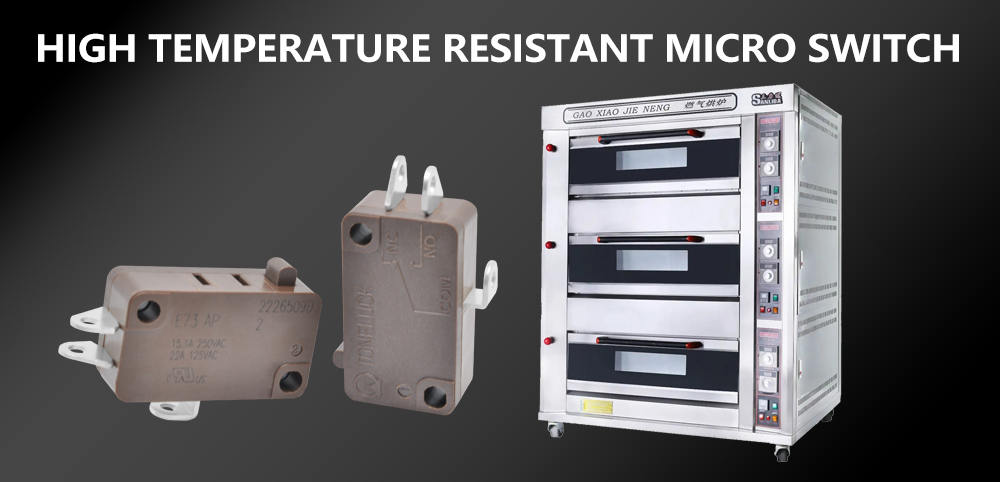The E73 series high-temperature resistant micro switch is a specific type of switch that is designed to be used in high-temperature environments, such as gas ovens or furnaces. It is often used as a safety switch to prevent overheating and ensure proper operation of gas ovens.
The E73 series microswitch is designed to be resistant to high temperatures and can withstand temperatures of up to 200°C or higher, depending on the specific model used. The switch’s high-temperature resistance makes it ideal for use in ovens, where the temperature can be high enough to damage regular switches.

The microswitch works by opening or closing an electrical circuit when it is triggered by a specific event, such as the oven reaching a specific temperature or the oven door being opened or closed. This triggers the switch to either turn the oven off or on, ensuring proper operation and safety.
The E73 series high-temperature resistant micro switch is an essential component in gas ovens, as it helps ensure the oven’s safe and efficient operation. Its high-temperature resistance makes it ideal for use in high-heat environments, and it is critical to ensure that it is properly installed and maintained to prevent any accidents or malfunctions.
1. The design structure of a high-temperature resistant microswitch
A high-temperature-resistant microswitch is a type of switch designed to operate reliably in high-temperature environments. These switches are often used in applications where temperatures can reach 200°C or higher, such as ovens, furnaces, and other industrial equipment.
High-temperature-resistant micro switches are typically made with materials such as ceramic or high-temperature alloys to withstand the high-heat environment. They also have specific design features, such as sealed contacts, to prevent the build-up of dust or other contaminants that can cause malfunctions.
The micro switch works by using a spring-loaded lever that is activated when a specific condition is met, such as a high temperature or pressure. This triggers the switch to open or close an electrical circuit, which controls a variety of functions, such as turning a device on or off.
High-temperature-resistant microswitches are important components in many industrial and manufacturing settings because they help ensure the safe and efficient operation of equipment in high-heat environments. Proper installation and maintenance of these switches are crucial to prevent accidents or malfunctions that can result in downtime or other safety hazards.
2. Introduction of the gas oven
A gas oven is a type of oven that uses gas as a fuel source to heat the cooking chamber. Natural gas or propane is the most common type of gas used in gas ovens. Gas ovens offer several advantages such as faster preheating times, more precise temperature control, and lower operating costs compared to electric ovens.
Gas ovens typically consist of a burner that is connected to the gas supply line, which heats the oven chamber. Gas ovens can be designed with different heating methods, such as convection or conventional heating, to provide different cooking options. Convection heating uses a fan to circulate hot air within the oven, which produces a more even and efficient heat distribution. On the other hand, a conventional gas oven has a heating element at the bottom or top of the oven, which creates heat that rises or falls naturally to cook the food.
As with all gas appliances, it is essential to follow safety precautions when using gas ovens to prevent accidents or hazards. Gas ovens need proper ventilation, as the burning gas produces gases that can be harmful if not properly ventilated. Gas ovens also require regular maintenance to ensure that the burner and gas supply line is functioning correctly and safely.
